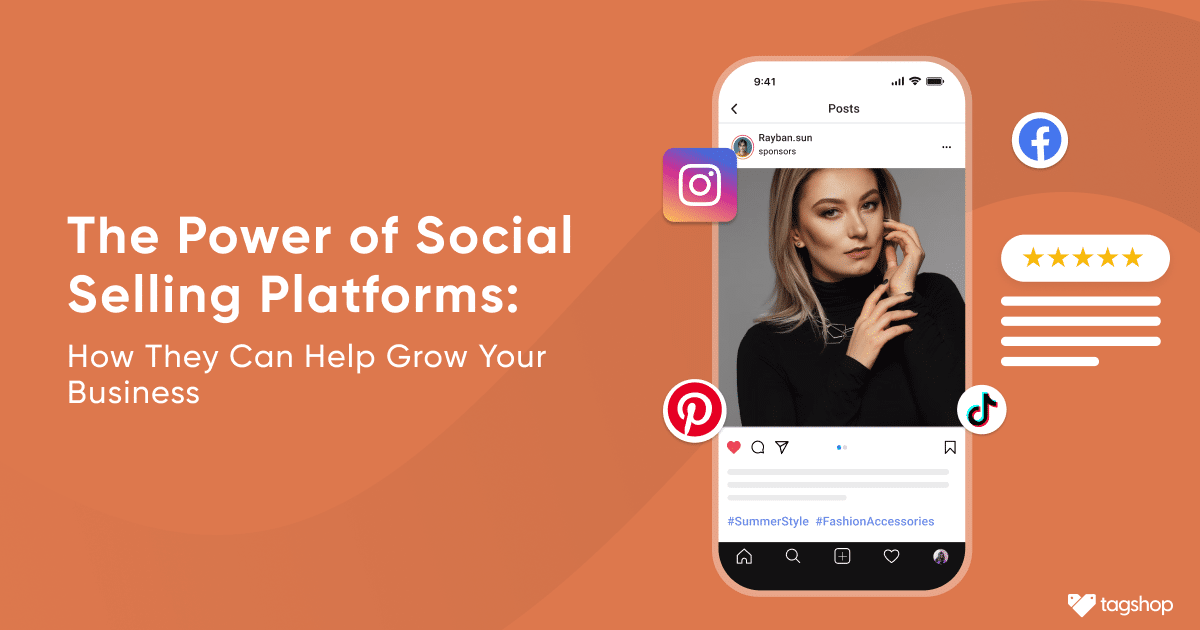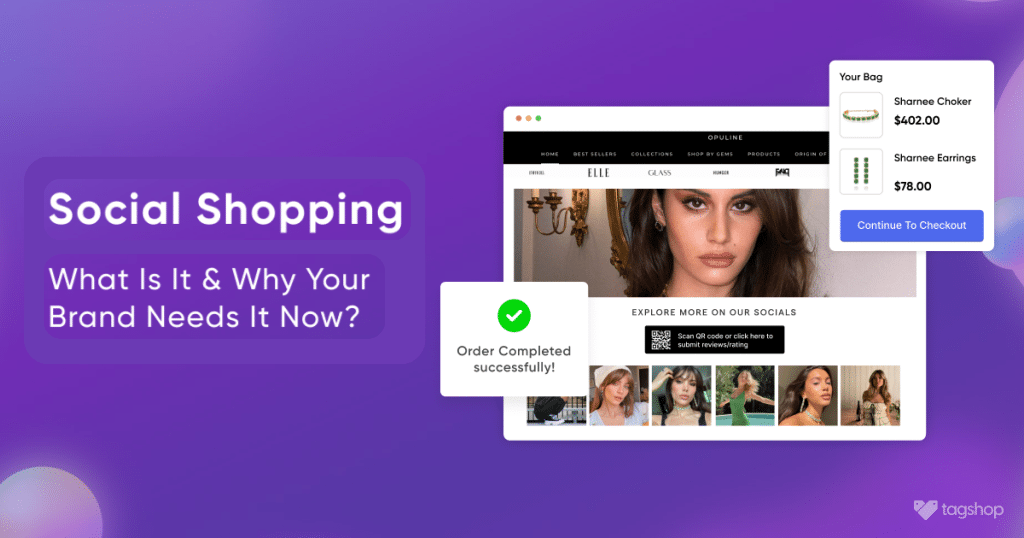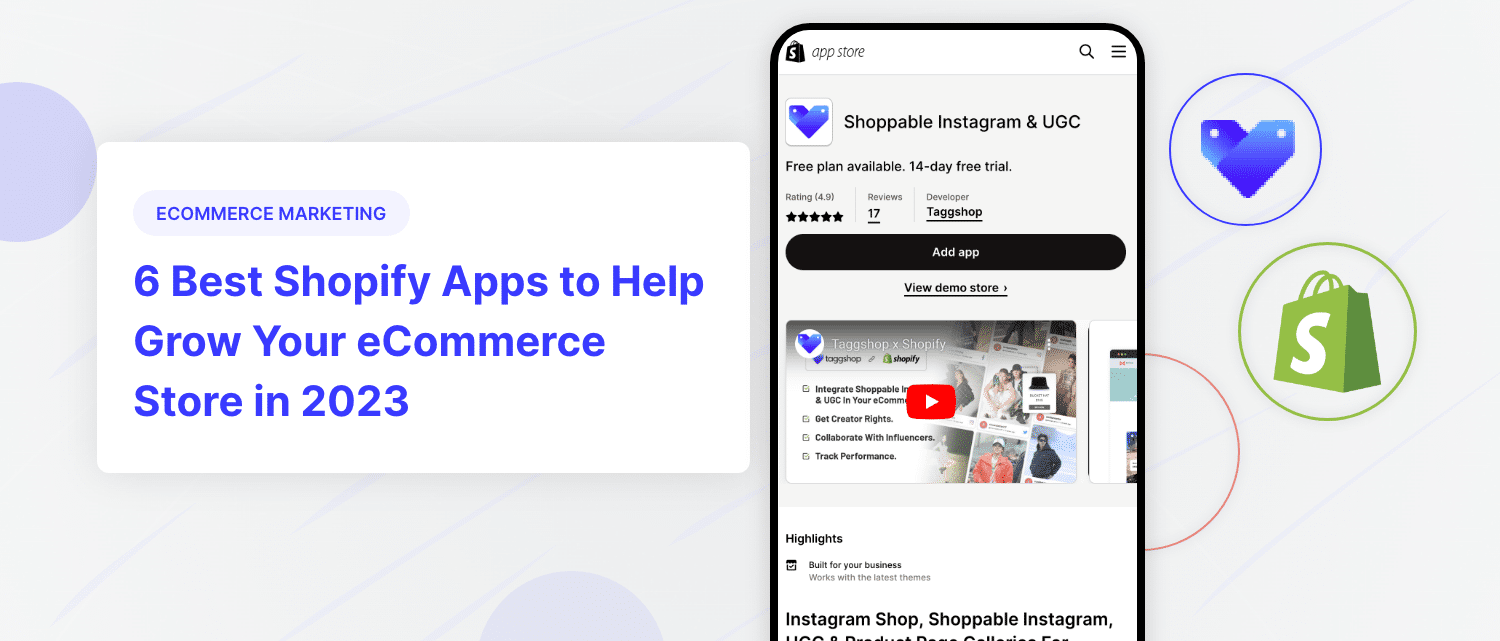The Power of Social Selling Platforms: How They Can Help Grow Your Business
Welcome to the world of Social Selling! In this blog, we will talk about everything you need to know from top social selling platforms to examples and tips. So, let’s begin!
When talking about ‘the most powerful tools that have transformed the digital world,’ there should be a no-questions-asked policy, and the title should go straight to social media platforms.
We know that you already believe this, still, to state facts – Over 3.6 billion people use social media worldwide. That’s almost half of the world’s population! And that’s not all; approximately 93% of marketers worldwide leverage social media selling.
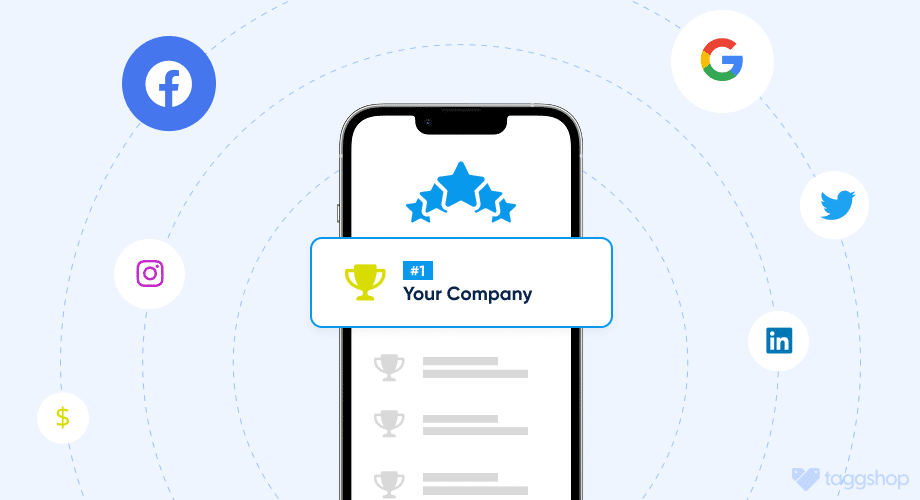
With such a massive audience, it’s no surprise that social selling has become an integral concept in every marketing strategy. And providing to that, social selling platforms have also emerged as a powerful tool for businesses to connect with potential customers and boost their sales.
Whether you’re a small business owner or a multinational corporation, leveraging the power of social selling can help you reach new audiences, build brand awareness, and ultimately grow your business.
And in this blog, we’ll explore the power of social selling platforms and how they can help take your business to the next level. So, let’s begin with the basics.

What Are Social Selling Platforms?

Social selling platforms are tools or online platforms businesses can use to sell their products or services directly to potential customers through user-generated content, such as customer-created content, influencer content, or branded content.
These platforms provide a way for businesses to engage with their target audience by providing personalized content and interacting more socially. Social selling involves building customer relationships through social content, which can help establish trust and credibility.
By using social selling platforms, businesses can leverage the power of authentic content to reach new audiences and generate more leads. Social selling platforms also allow businesses to track and analyze their social media performance, making optimizing their marketing strategies and improving their ROI easier.
Top 10 Social Selling Platforms
1. Pixlee TurnTo
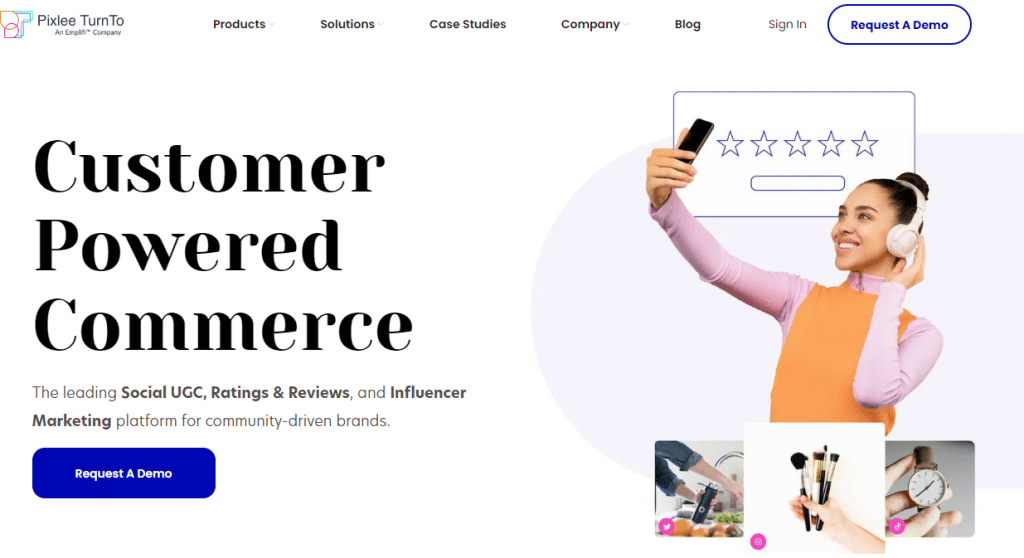
Pixlee TurnTo is a user-generated content platform that enables businesses to sell socially by helping businesses collect and curate customer photos and videos on social media.
Businesses can use this social selling tool to curate UGC featuring their products, and then display that UGC alongside product reviews and ratings. This can create a more immersive shopping experience, providing potential customers with social proof and authentic product information in one place.
Pixlee TurnTo also offers a shoppable gallery feature that allows businesses to showcase their products and link them to their e-commerce site, improving their conversion rates.
2. Tagshop

Tagshop is a social selling platform that provides a way for businesses to turn their social content into a shoppable feed.
With Tagshop, businesses can easily add product tags to their social media posts and stories and allow customers to integrate this content into their eCommerce websites, homepage, product pages, or emails.
One of the key features of Tagshop is its simplicity. With Tagshop, businesses can easily set up their shoppable feed in just a few clicks, without any coding or technical expertise.
With its easy-to-use shoppable feed feature, seamless e-commerce integration, advanced analytics and reporting, and customization options, Tagshop provides businesses with everything they need to succeed with social selling.

3. Dash Hudson
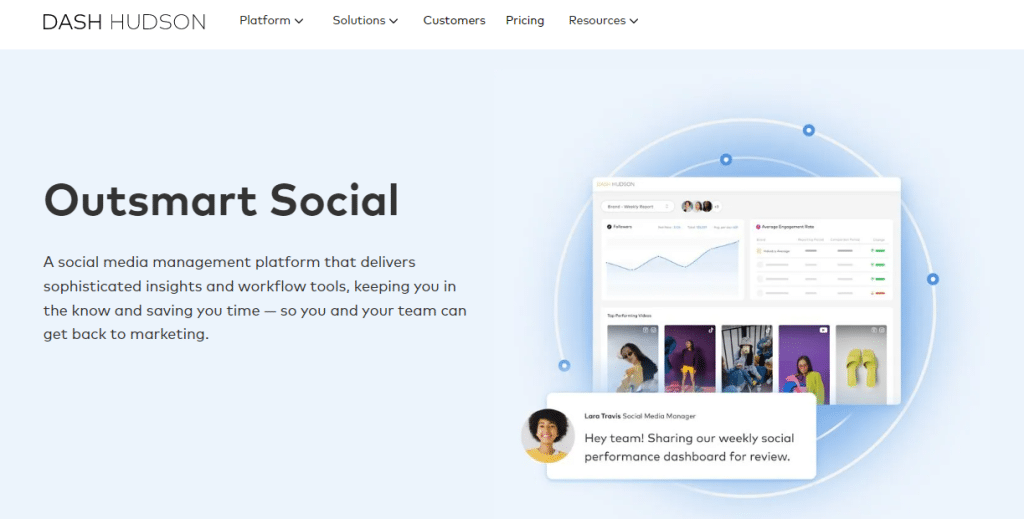
Dash Hudson is a social selling platform that helps businesses to grow their online presence and drive sales through visual marketing.
The tool offers a range of efficient features, such as its content creation and curation tools. These tools enable businesses to create and manage visual content at scale, ensuring that their social media feeds and marketing campaigns feature a variety of high-quality visual content.
Dash Hudson offers integrations with various e-commerce platforms, including Shopify and WooCommerce. These integrations enable businesses to connect their social selling efforts with their online store, creating a seamless customer shopping experience.
4. Bazaarvoice
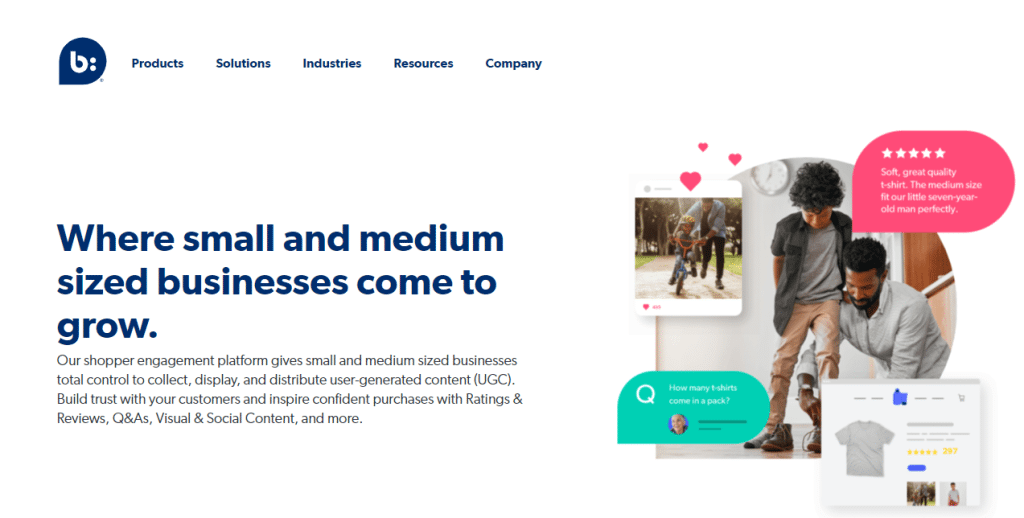
Bazaarvoice is a social selling platform that enables businesses to collect and leverage customer reviews and other user-generated content to drive sales.
Its ability to collect and syndicate customer reviews across a range of websites and channels, including social media, search engines, and e-commerce platforms enables businesses to reach a wider audience and improve their online reputation.
In addition to that, the tool also has moderation and management features that allows businesses to manage the content seamlessly.
Bazaarvoice offers integrations with a range of popular-commerce platforms. These integrations enable businesses to seamlessly incorporate customer reviews and other UGC into their online store, creating a more engaging and persuasive shopping experience for their customers.
5. Foursixty
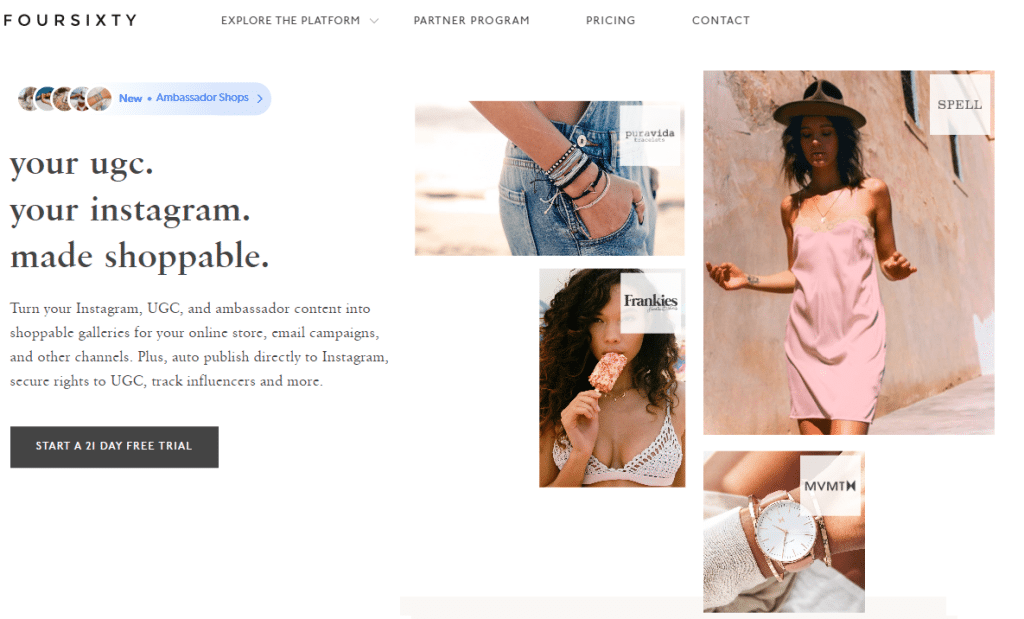
Foursixty is a social selling platform that provides businesses with a range of tools and features to create a seamless shopping experience for their customers, ultimately driving sales and increasing customer loyalty.
One of the key features of Foursixty is its ability to create a shoppable Instagram feed. With Foursixty, businesses can tag their products in Instagram posts and stories, allowing customers to easily click through to the product page and make a purchase.
In addition to its shoppable Instagram feed, Foursixty also has analytics and reporting tools; Foursixty also offers customization options to create a unique and branded shopping experience.
6. Flowbox
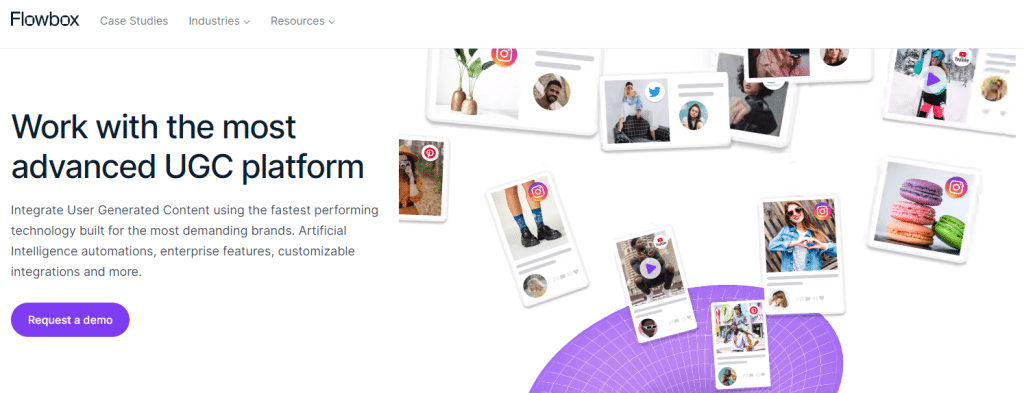
Flowbox is another social selling platform that lets brands create shoppable UGC galleries.
It is a powerful sales and marketing tool that enables to collect and curate UGC from social media platforms like Instagram, Facebook, and Twitter, and allows users to utilize that content to create a more engaging and authentic shopping experience for their customers.
Flowbox also provides businesses with various customization options to create a unique and branded shopping experience.

Benefits of Using Social Selling Platforms
A good social selling platform can make all the difference in helping brands leverage social media to its fullest potential. Social selling platforms provide a range of benefits that can help businesses improve customer relationships, increase sales, and attract high-quality leads. Let’s read about them more.
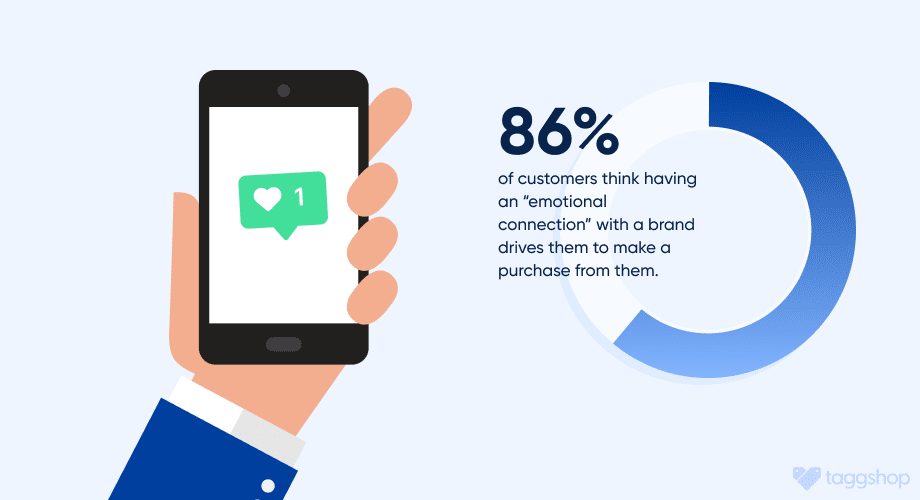
1. Helps Build Customer Relationships
As businesses, we are all aware of the importance of customer relations. It is the key factor that helps any business in staying afloat and forming real connections.
One of the biggest advantages of using a social selling platform is that it enables businesses to connect with their customers in a more meaningful way.
Businesses can establish a stronger rapport with their customers by using relevant social media content, answering questions, and responding to feedback. This helps build trust, increase loyalty, and improve customer retention.
2. Increases Sales
Social selling platforms provide businesses with a direct channel to showcase their products and services to a wider audience.
With the help of social selling, businesses can showcase their valuable user-generated content, offer inspiration to potential customers, and allow them to make confident purchases. This way, businesses can attract potential customers who may not have been aware of their brand otherwise.
Plus, social selling platforms provide metrics to track the effectiveness of marketing efforts, so businesses can make data-driven decisions and optimize their social selling strategy for even better results.
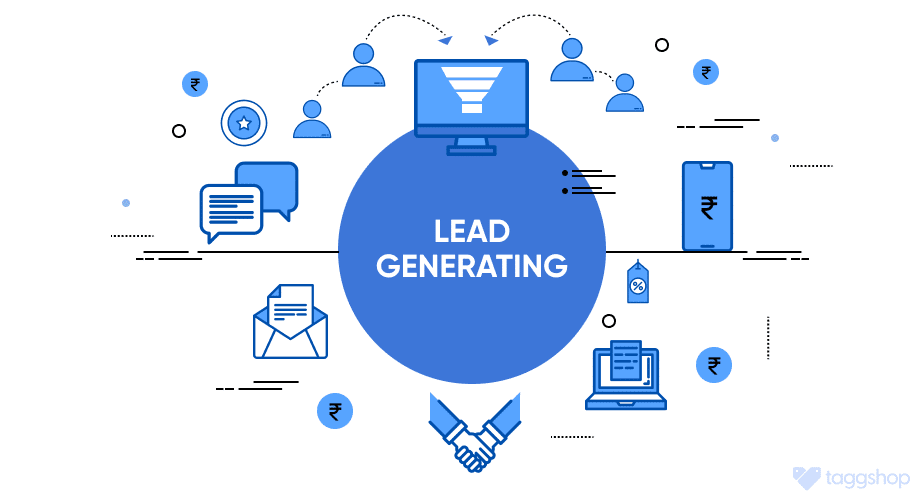
3. Brings High-Quality Leads
A significant advantage of integrating social selling into your marketing strategy is the fact that this concept includes everything ‘Social.’ And where social begins, awareness follows.
Brand awareness is a key factor in reaching the right people with your message, and with social selling businesses can ensure that.
This way, social selling can be a game-changer for businesses looking to reach more the masses with an impact, ultimately bringing high quality leads.
Recap of everything we have covered until now: what is social selling, a fully-curated list of the top 10 social selling platforms, and we have also talked about the benefits of using social selling channels.
But how to really use these platforms to their best potential? That’s what’s next. Continue reading to know:
How To Effectively Use Social Selling Platforms?
To effectively use social selling platforms, businesses should keep in mind the following tips:
1. Know Your Target Audience
The first step to effectively use social selling platforms is to understand your target audience. Businesses should take the time to research and identify their ideal customers’ interests, preferences, and pain points to create content that resonates with them.
By tailoring content to their audience’s needs and showcasing it compellingly, businesses can build a more meaningful connection with their followers and drive engagement, ultimately leading to more revenue and overall growth.
2. Provide Valuable Content
Providing valuable content is key to creating a strong brand presence on social media. Businesses should aim to create informative, engaging, and relevant content that adds value to their followers’ lives.
This can include showcasing authentic user-generated content or collaborating with popular influencers for high-quality content, product reviews, and customer success stories.
Social selling is about building relationships, and providing valuable content is key to achieving that. By sharing informative and relevant content, businesses can establish themselves as thought leaders and earn the trust of their audience.
3. Engage With Your Audience
Social media is a two-way conversation, and businesses should actively engage with their audience to build relationships.
This means staying responsive and posting content that your audience finds relatable and relevant. By creating a more personalized experience for their followers, businesses can touch base with customers and instill a sense of community in them.
4. Keep Performance’s Track
Social selling platforms provide analytics features that can help businesses track the performance of their social media campaigns, clicks on shoppable posts, and other actions taken by customers.
Businesses can gain insights into what content resonates with their audience and make data-driven decisions to optimize their strategy by measuring engagement metrics like reach, impressions, and clicks.
These metrics can help measure your efforts’ effectiveness and make data-driven decisions to optimize your strategy.
Successful Social Selling Stories
Social selling is more than just a trend. It’s a concept that modern-day brands are integrating gradually in their marketing efforts. Statistically, 61% of businesses have confirmed experiencing a positive impact on their revenue growth.
This number is bound to grow considerably in the coming years. Here are some popularly renowned brands that have successfully used social selling in their strategies and are achieving stupendous results.

1. Glossier
Glossier is a beauty brand that has become a well-known example of how social selling can help to build a successful brand and drive sales.
The company has leveraged social media platforms like Instagram to create a community of loyal followers and customers who are passionate about its products.
Glossier’s Instagram content is a key part of its social selling strategy. The company has created a visually stunning and cohesive feed that showcases its products in a natural and relatable way.
The company showcases this stunning feed on its website and has turned it shoppable. This has helped the brand drive sales, customer engagement and feedback.
Overall, Glossier’s social selling strategy has been a key factor in its overall success. By leveraging social content, and by actively engaging with customers, and using their feedback to improve product development and marketing strategies, Glossier has built a brand that is both relatable and aspirational.
2. Stella & Dot
Stella & Dot is a fashion and jewelry brand that has grown into a successful direct-to-consumer brand through social selling.
One of the key benefits of Stella & Dot’s social selling strategy is that it allows the company to tap into a large network of customers who might not otherwise be reached through traditional retail channels.
By leveraging social content from platforms like Facebook and Instagram, as well as in-person events like trunk shows and pop-up shops, Stella & Dot’s stylists are able to reach a wide audience of potential customers.
Stella & Dot’s products are designed to be versatile and customizable, which makes them well-suited to social selling. The brand successfully caters to customers by forming a loyal customer base by showcasing UGC on its website.
This strategy has captured the attention of fashion-conscious consumers around the world making it a successful brand.

3. Malandra
Malandra is a Mexican jewelry brand that has leveraged social selling to build its business and reach a wider audience of customers.
Malandra’s social selling strategy allows brands to tap into a large and growing market of consumers who are looking for unique and stylish jewelry designs by providing their customers with inspiration using their existing customers’ experiences.
The brand has leveraged the power of social content in an impactful way. By using UGC and turning it into a shoppable gallery, Malandra has successfully been able to maximize its sales and brand awareness.
To know Malandra’s brand journey, read our full case study here.
Best Practices For Social Selling
Here are some best practices for social selling to help maximize your results and avoid common mistakes and pitfalls:
1. Build And Maintain Relationships

Social selling is all about building relationships with potential customers. Take the time to engage with your followers, share valuable content that will resonate with them, respond to their queries, and provide them with value in return for their time.
2. Focus On Quality Over Quantity
It’s essential to have a good social content inventory, but quantity doesn’t overpower quality. Make sure the content you use for you social selling efforts are authentic and unique. Avoid using content that doesn’t do justice to your brand’s principles and values.
3. Provide Value
Social selling is not just about promoting your products or services. It’s about providing value to your audience and building trust. Share content that provides helpful information, solves problems, and educates your audience. The content should be such that the audiences immediately feel compelled to buy it.
4. Use Visuals
Visuals are a powerful tool for social selling. It is visuals that helps brand put up a front for brands and show potential customers what they have to offer them. Use high-quality images and videos to showcase your products or services, and create a consistent visual brand that helps your audience recognize you. Use branding elements such as brand logo and colors.
5. Leverage User-Generated Content:
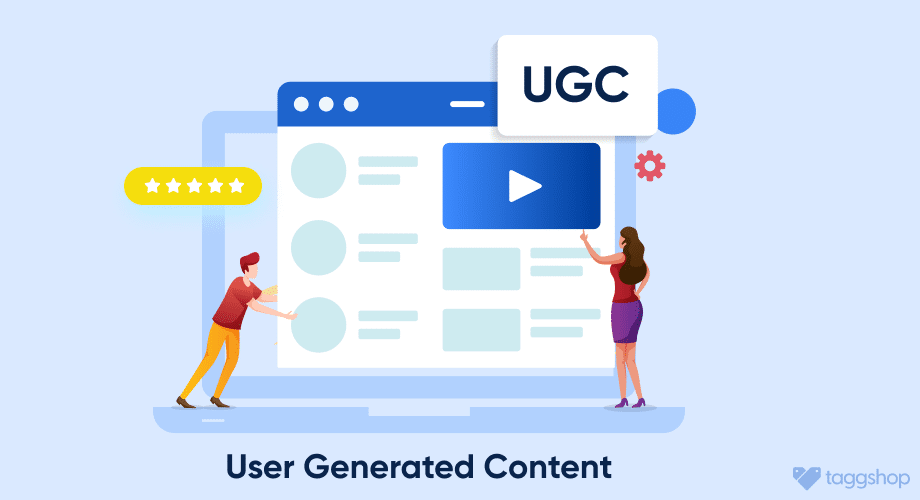
Authenticity is critical to building trust with your audience; no form of content is more authentic than UGC, and it can help to showcase your products in a real-world context.
It is a great way for your business to share your story and experiences and personally connect with your audience.
Encourage your followers to share photos and videos of themselves using your products, and repost or share this content on your own social media channels.

Conclusions
To conclude, social selling platforms offer a powerful way for businesses to leverage the power of social media and online communities to reach new audiences, engage with customers, and drive growth.
By providing a more personalized and interactive experience, social selling platforms can help businesses build stronger customer relationships and create a loyal following. With the valuable analytics and insights social selling platforms provide, businesses can optimize their social media marketing strategy and make data-driven decisions about their content.
The benefits of using social selling platforms are clear from increased sales to improved customer engagement. As businesses continue to navigate the ever-evolving digital landscape, social selling platforms will play an increasingly important role in driving growth and revenue.
FAQs
Definition of social selling platforms
Social selling platforms are online tools and platforms that allow businesses to use social media content to connect with potential customers and sell products or services. These platforms provide businesses with tools and features to streamline their social media marketing efforts, such as creating shoppable galleries of social media content and integrating them into websites.
Why do brands need social selling?
Social selling allows brands to engage with customers on a personal level and build relationships that can lead to increased customer loyalty and advocacy. It can help brands increase sales and revenue by providing a direct channel to sell products and services to their audience. Overall, social selling can be a powerful tool for brands looking to connect with customers, increase their online presence, and grow their business.
How do I start Social Selling?
To start social selling you need to begin by defining your target audience, after which you can ensure that your social media content is up-to-date, provides value and can preach your brand’s value. You can then use social selling platforms like Tagshop to streamline your social selling efforts and enhance your online presence.
